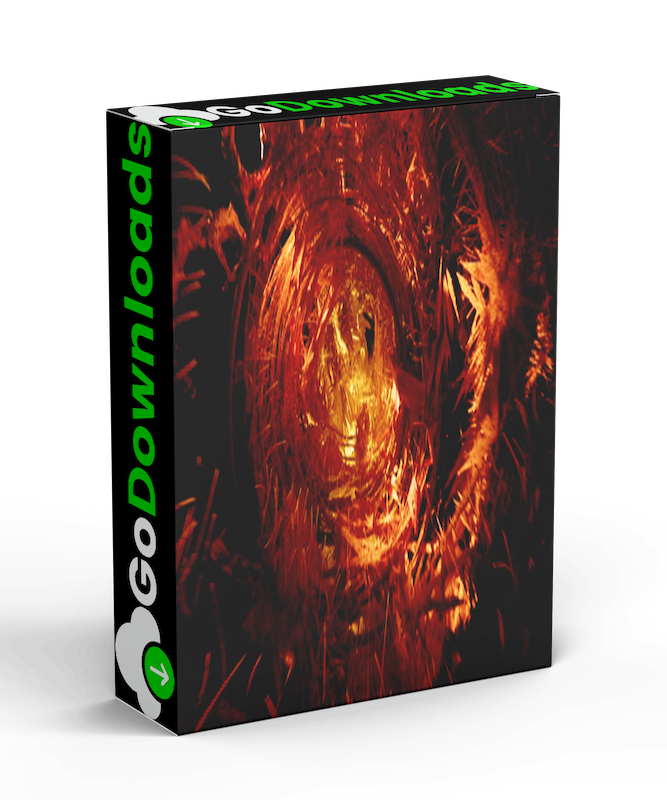Cool
Houdini School – HS -121 – Abstract Motion Design Copernicus Free Download

From novice Houdini users to seasoned motion designers, all students will find value in this course’s in-depth exploration of design principles and their applications using Houdini’s latest tools. You’ll learn the key aspects of crafting compelling images: lighting, composition, camera work, and color theory. We’ll cover simple, easy-to-follow rules to improve your design eye, putting these principles into practice directly in Houdini and Karma. You’ll also learn to generate textures, build shapes, and create slap comps in Copernicus, Houdini’s brand-new image processing context while exploring the latest Karma features in Houdini 20.5. By the end, you’ll have the skills to elevate the aesthetic quality of your renders.
Learning Outcomes:
Enhance your Houdini renders with composition and lighting fundamentals! Through practical exercises, you’ll improve your artistic eye by covering design principles like lighting, composition, and color. Additionally, you’ll learn how to apply Houdini’s new Copernicus context to your latest projects. This course teaches you to enrich your renders by combining a deeper understanding of design with Houdini’s latest tools.
Session 1
Idea Generation and Intro to Copernicus
Students will gain a solid foundation in idea generation methods by identifying specific inspirational topics for abstract motion design. We will create unique procedural textures and generate abstract shapes through Houdini’s new Copernicus feature, covering fundamental concepts like noises, UVs, SDF shapes, stamping, and preview materials. This session will explore various Copernicus COPs, set up Karma render environments, and apply practical texture assignments. Students will dive deep into design fundamentals and apply them to Houdini and Karma through working on shots and technical exercises.
Introduction
Ideation and Inspiration Sources
Introduction to Copernicus (COPs) Fundamental Concepts
Noises, UVs, SDF Shapes, Stamping, Preview Material and more
Exploring Copernicus COPs
Setting Up Karma Render Environments
Practical Texture Assignment
Session 2
Composition and Lighting
In this session, we explore composition principles including the Golden Ratio, perspective, and framing. Students will learn camera essentials such as focal length. We then dive into the fundamentals of light behavior and various studio lighting setups, covering key, fill, back, and rim lights, before exploring more complex lighting arrangements. Students will master shadow quality and control, and understand the interplay between composition and lighting. We’ll acquaint ourselves with Karma’s lighting toolset and learn how to finalize a shot. The session also introduces Karma’s new Lens Material LOP and the new Quick Material. They will learn, how to use Copernicus to distort renders, to generate Light Textures and Gobos. Throughout, students will apply their learnings to practical lighting and composition assignments, enhancing their ability to create effective renders in Houdini.
Composition Principles – The Golden Ratio, Perspective, Framing, and Beyond
Camera Essentials – Understanding Focal Length
Fundamentals of Light Behavior
Studio Lighting Setups – Key Lights, Fill Lights, Backlights, Rim Lights
Exploring more Complex Lighting Setups
Mastering Shadow Quality and Control
The Interplay of Composition and Lighting
Exploring Karma’s Lighting Toolset
Finalizing a Shot
Karma’s New Lens Material LOP
Introducing the New Quick Material
Using COPs to distort renders
Generate Gobos and Light textures in COPs
Practical Lighting and Composition Assignment
Session 3
Color and Compositing
This session introduces students to color theory, exploring color contrasts and harmonies. We’ll examine the interplay of composition, lighting, and color to create compelling visual narratives. The course covers aberrations to increase realism in Copernicus Slap Comps, and we’re using simulation data in COPs. Therefore, Students will learn to set up an MPM Solver and how to use Copernicus Slap Comps creatively. Furthermore, Students will learn multiple ways to make textures tileable in COPs. They learn, how to import Geometry with Attributes and Groups to COPs, how to bring in Objects with UVs to COPs, and how to reproject textures to the UVs to avoid UV seams. Students will import Heightfields and Cameras into COPs and will learn, how to mix materials by painting into COPs. We’ll conclude with a final assignment. By the end of this session, students will have a solid understanding of color principles and advanced compositing techniques to enhance their Houdini projects.
Introduction to Color Theory
Color Contrasts and Harmonies
The Interplay of Composition, Lighting, and Color
Enhancing Image Realism with Copernicus Slap Comps
Using the MPM Solver
Importing Simulation Data in COPs
SOPs to COPs and COPs to SOPs
Using the Geometry Spreadsheet with COPs
Bring in UVs from SOPs
Reproject Textures over multiple UV islands in COPs
Import Camera into COPs
Heightfield to COPs
Multiple ways to make textures tilable
Paint into COPs
Mix Materials in COPs
Using Copernicus Slap Comps Creatively
Final Assignment
![]()
HoudiniSchoolHS121AbstractMotionDesignCopernicus.part1.rar – 475.0 MB
HoudiniSchoolHS121AbstractMotionDesignCopernicus.part2.rar – 475.0 MB
HoudiniSchoolHS121AbstractMotionDesignCopernicus.part3.rar – 475.0 MB
HoudiniSchoolHS121AbstractMotionDesignCopernicus.part4.rar – 475.0 MB
HoudiniSchoolHS121AbstractMotionDesignCopernicus.part5.rar – 322.2 MB




